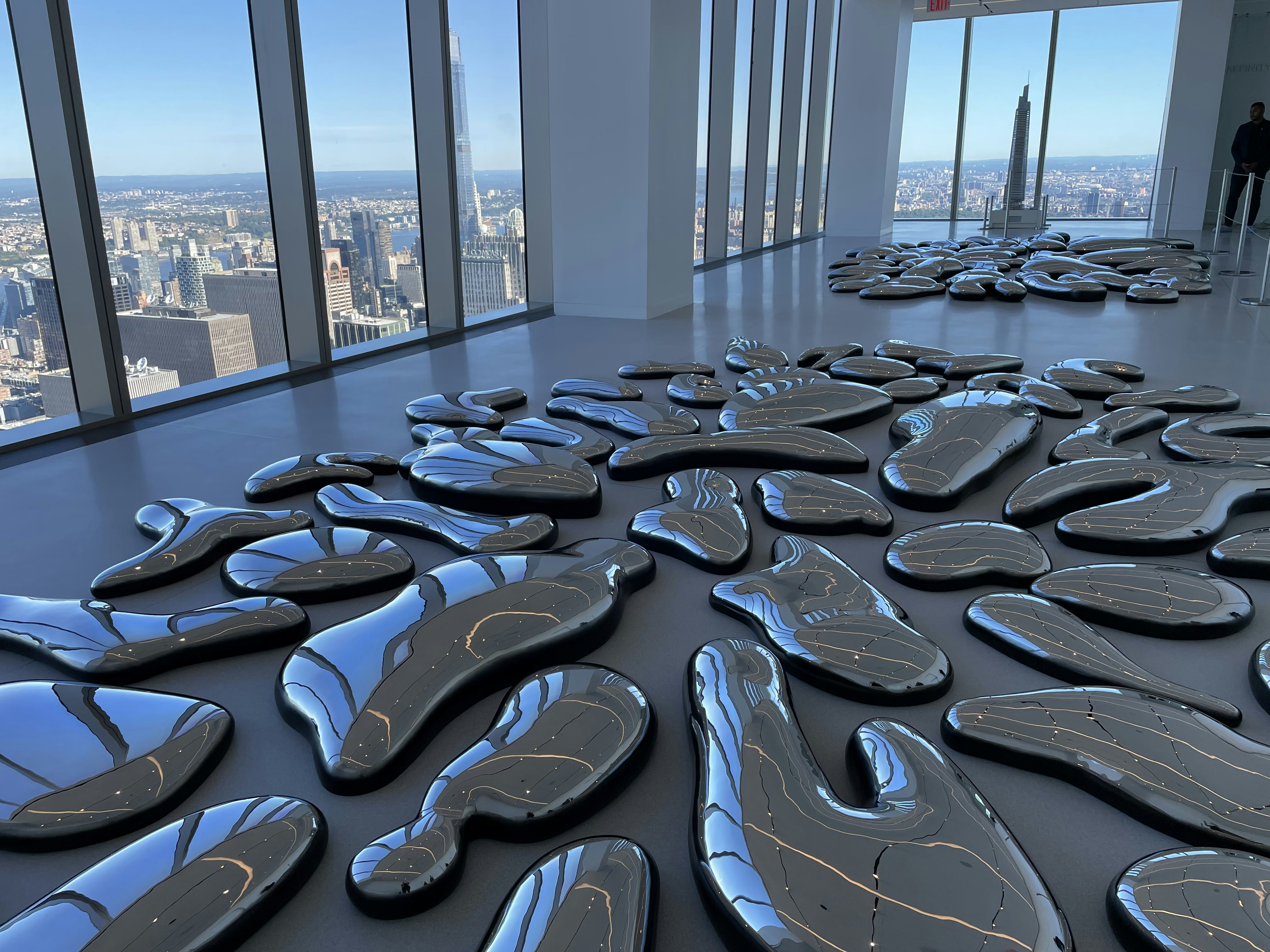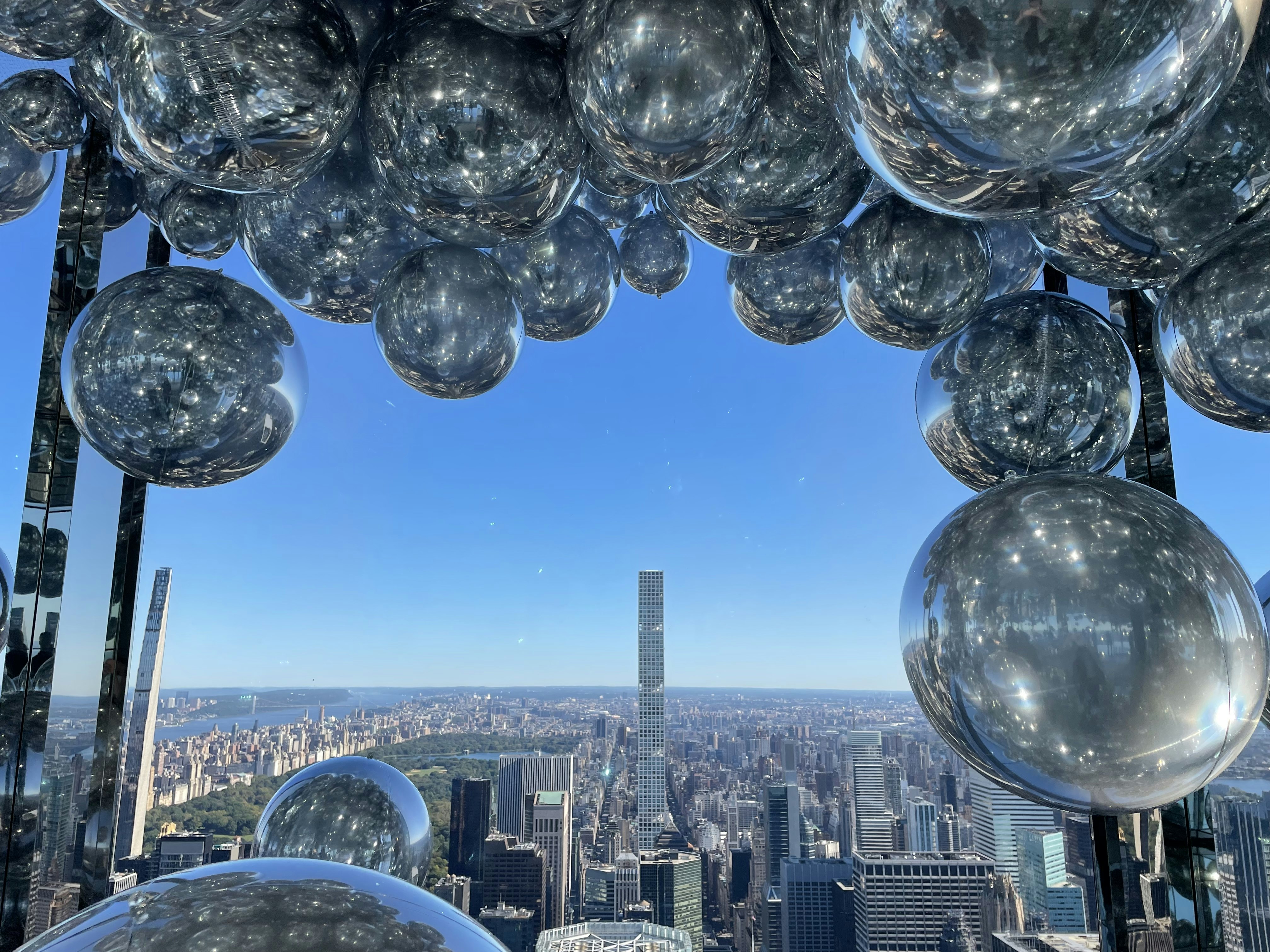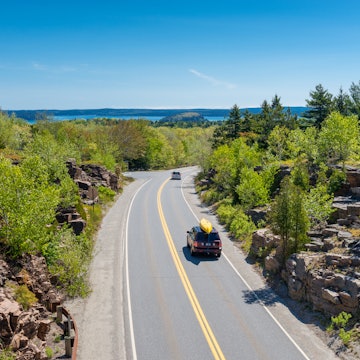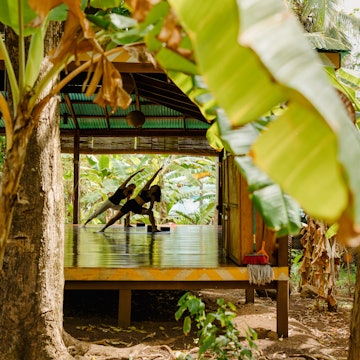
Summit One Vanderbilt: Why I loved this new -- and definitely different -- NYC observatory

Oct 20, 2021 • 7 min read

The central observation space at Summit One Vanderbilt in New York City looks like a mirrored jewel box © Laura Motta / Lonely Planet
Looking at New York City from above is almost as important a tradition as visiting the city in the first place.
Of course, there are the classic bird’s-eye views over the city. There’s the view from the Empire State Building, with its open-air, 86th-floor observation deck that gives the breathless sense of standing not just on top of the world, but out in the elements. There’s Top of the Rock, with its unmatched views of St. Patrick's Cathedral and the skyscrapers in Midtown, including the Empire State Building.
Then there are the newer kids on the block, like the sky-high rooftop bars (the ones at the Park Hyatt New York and the Hyatt Centric Times Square come to mind), or The Edge at Hudson Yards, a shiny observation spot with a jutting platform that suspends visitors 100 stories over Manhattan's West Side. You might also try the 102nd floor at One World Observatory, where you might notice the building swaying gently on a breezy day – an extra bonus for urban thrill-seekers.

The newest view of them all, however, is looking to offer something different. Summit One Vanderbilt, which opens to the public on October 21, lets visitors do more than just gaze across the spires of the city's tallest buildings. Here, you might find yourself looking inward at the observatory itself as much as looking out.
Constructed over two stories, the observatory looks and feels like you’re standing in a massive mirrored box. (The space can get so bright that we were handed sunglasses on the way in, and visitors are encouraged to bring their own.) A stroll around it reveals Google Maps-worthy views over the shining Chrysler Building, Central Park, the Hudson River and Bryant Park. But it will also show you infinite reflections of yourself and your fellow visitors and create the sensation that you're floating along the reflective floor.
For some, this idea of an immersive, visually gobsmacking tourist attraction won’t be new. This observatory takes its cues from attractions that feel almost fully built for social media, including things like Van Gogh: The Immersive Experience, which paints the artist's signature scenes across gigantic video screens that surround its visitors. Even heralded Japanese artist Yayoi Kusama, who was creating mirrored “infinity” rooms full of colored baubles forty years ago, has found newfound fame in the Instagram era, where her work feels ready-made for sharing (and bragging about) online.

A tour through Summit One Vanderbilt: The phases
Most of the Summit One Vanderbilt experience – and it is a complete experience – was designed by Kenzo Digital, an artist who's created immersive performance and video installations for Beyoncé and Kanye West. The two-story glass-and-mirror room, called Air, is its first phase. From there, you'll move on to Levitation, a series of much smaller transparent glass boxes that are cantilevered over the edge of the One Vanderbilt skyscraper. The glass floor lets you gaze down more than 1000 feet to the street below. You can even jump inside the box – impressing your Instagram followers seems key here – but I wasn't brave enough to try it. In fact, the entire experience built to create a feeling of weightlessness and can be a bit disorienting, so those with vertigo or motion sickness might want to take it slowly or start the day with some Dramamine.
After the cantilevered boxes, you'll have the opportunity to join the portion of the tour called Ascent – a glass elevator that carries visitors even higher to the tallest portions of the 1401-foot building. To reach the elevator, you’ll walk through an open-air garden, which feels a bit like the observation deck at the Empire State Building but with an updated sensibility. (The Ascent portion is an add-on experience and requires an additional ticket.) There’s an outdoor bar and indoor cafe near Ascent, with swooping modern design and a menu by Danny Meyer that includes snacks, small plates and cocktails. I especially liked the design of the small, Midcentury-style fireplace, which hangs from the ceiling and has no supports on the floor – paying homage to the “floating” theme throughout Summit. It's a great place to stop for a break after your tour, and to continue to take in the views. I predict that this area will be popular for sunset cocktails, proposals and other kinds of special occasion photo-snapping.

The extras at Summit: bars, art and more immersive exhibits
Summit also includes two additional gallery spaces that serve as transitions and palate cleaners between Air, Levitation and Ascent. One currently includes an installation by – naturally – Yayoi Kusama called Clouds, which looks like large, liquid silver drops pooling across the floor. A second, designed by Kenzo Digital, is a room full of inflatable silver balloons that float through the air thanks to the aid of a few high-powered fans. These spaces are less dramatic and sweeping than the core elements of Summit. Kids and tweens may see the balloon room in particular as the best part of the experience thanks to its giddy sense of fun. Be sure to snap a selfie of your reflection in one of the balloons before you move on, because, of course, that's the whole point.
How to get to Summit, and how to get inside
One Vanderbilt, now New York City's second-tallest office tower, is directly adjacent to Grand Central Station and its tangle of connecting subways. (The tallest tower is One World Trade Center, which soars about 400 feet higher into the Manhattan sky.) Follow the signs from the station's famous Main Concourse into the tower, but don't worry if it still looks like you're in Grand Central as you enter. The white marble was intended to create a sense of seamlessness between the station itself and the new skyscraper.
You can purchase tickets at the kiosks in the lobby, or reserve in advance online, which is recommended to save time. To reach Summit, you'll step into a mirrored elevator that whisks you up more than 1000 feet and gives you a sneak peek into the mind-bending sensation you're about to experience.

Ticket packages range from $39-$73 per person, with lower prices for kids. (Those under 5 can enter for free.) Some tickets include Ascent, while others include a Danny Meyer-styled cocktail to top off the experience.
A few caveats to consider before your visit: Summit's website discourages visitors from wearing skirts or dresses to the experience, given the number of mirrored spaces they will encounter. And in addition to bringing along your sunglasses to protect from the glare, guests will not be permitted to wear stilettos or steel-toed boots, in the interest of protecting the mirrored surfaces.
Summit is fully wheelchair accessible and service animals are allowed.
What to see and do near Summit
If you’re soaring up to Summit to take in the view, keep in mind that you’re in a neighborhood that’s rich in cultural sights. Pairing a visit with a trip to historic Grand Central Station seems like a no-brainer. After you’ve spent some time gazing down at the city at Summit, take a moment to look up at Grand Central’s famous sea-green ceiling, with its celestial-themed mural.
If you have a bit longer to spend and want to soak up some vintage New York City ambiance, step down to the lower level to Grand Central Oyster Bar & Restaurant, which opened in 1913. Another must-see spot in Grand Central Station is The Campbell, a bar serving fancy cocktails inside what was once the opulent office space of financier John W. Campbell. It’s worth stepping inside just to catch a glimpse of the dramatic window behind the bar, and the coffered, 25-foot ceilings.
If you haven’t gotten enough of Gilded Age Manhattan after all that, we recommend stepping a few blocks downtown to the Morgan Library and Museum, formerly the opulent personal library of Pierpont Morgan. It retains its original palazzo-style design by McKim and includes an addition by Renzo Piano.
And of course, just a few blocks west, there’s always elegant Bryant Park and the central branch of the New York Public Library, with its stately stone lions out front and its gilded reading rooms.
You might also like:
6 reasons New York City is a great winter destination
See New York City from the tallest observation deck in the Western Hemisphere
How this remnant of the World Trade Center became a symbol of NYC’s resilience















